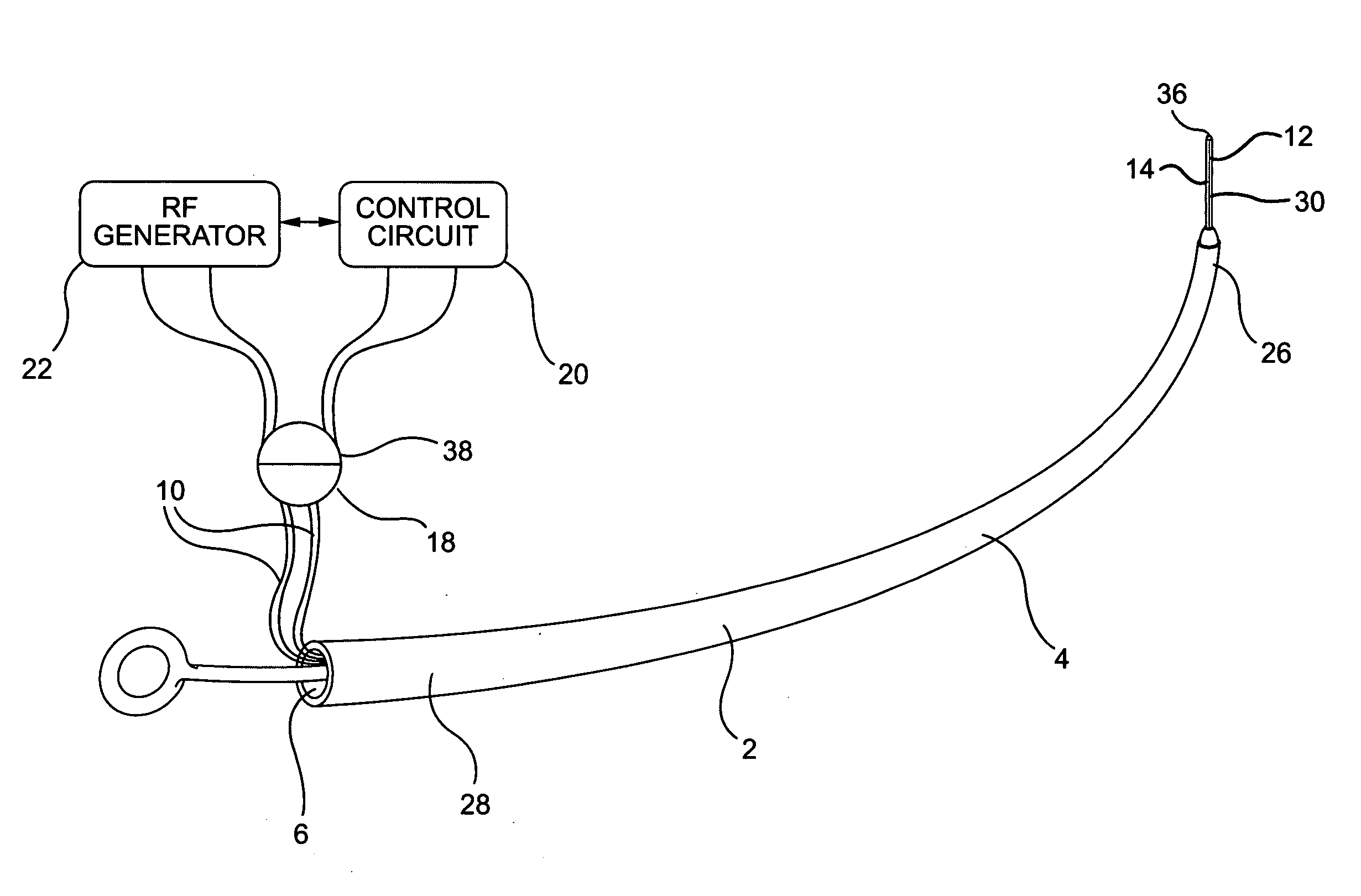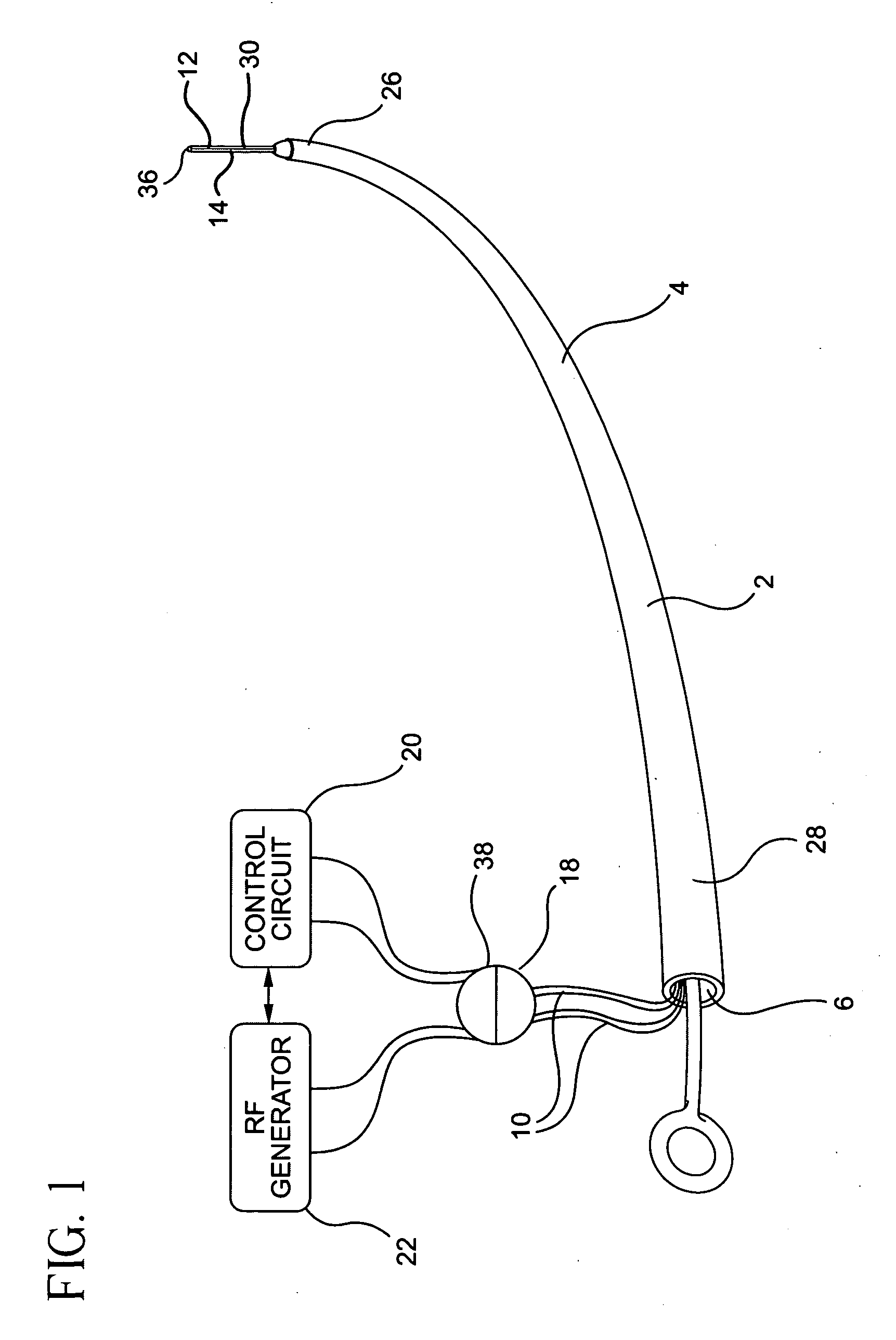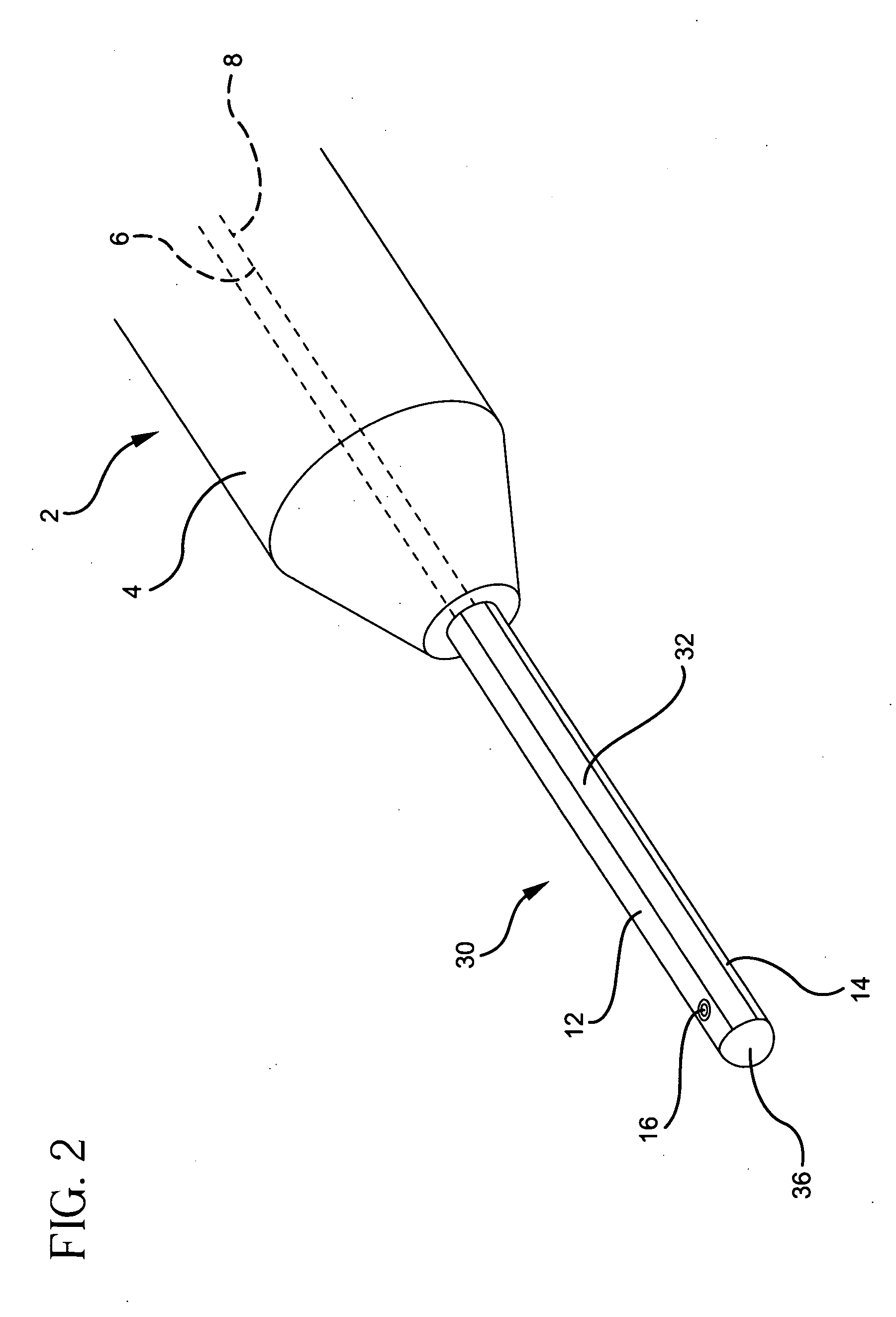Tubal sterilization device having expanding electrodes and method for performing sterilization using the same
a sterilization device and electrode technology, applied in the field of permanent contraceptives or sterilization devices, can solve the problems of repeated applications, significant side effects, and the risk inherent in anesthesia and permanent scar formation at the site of incision
- Summary
- Abstract
- Description
- Claims
- Application Information
AI Technical Summary
Benefits of technology
Problems solved by technology
Method used
Image
Examples
Embodiment Construction
[0046] Several embodiments of a tubal sterilization device formed in accordance with the present invention are disclosed herein. In each embodiment, RF (radio frequency) energy is used to heat particular portions of the fallopian tube of a patient which, through the healing process, eventually occludes the fallopian tube to cause permanent contraception or sterilization. Each embodiment, as will be described, includes at least a pair of expandable electrodes which are electrically separated from each other in their expanded state to prevent their shorting so that a bipolar RF signal may be provided to the electrodes to cause heating of the surrounding tissue with which the electrodes come in contact.
[0047] In each of the embodiments of the present invention, the electrodes are initially in a first, closed position to facilitate the transcervical insertion of the device into the fallopian tube of the patient. When the device is positioned in a desired location within the fallopian t...
PUM
 Login to View More
Login to View More Abstract
Description
Claims
Application Information
 Login to View More
Login to View More - R&D
- Intellectual Property
- Life Sciences
- Materials
- Tech Scout
- Unparalleled Data Quality
- Higher Quality Content
- 60% Fewer Hallucinations
Browse by: Latest US Patents, China's latest patents, Technical Efficacy Thesaurus, Application Domain, Technology Topic, Popular Technical Reports.
© 2025 PatSnap. All rights reserved.Legal|Privacy policy|Modern Slavery Act Transparency Statement|Sitemap|About US| Contact US: help@patsnap.com



